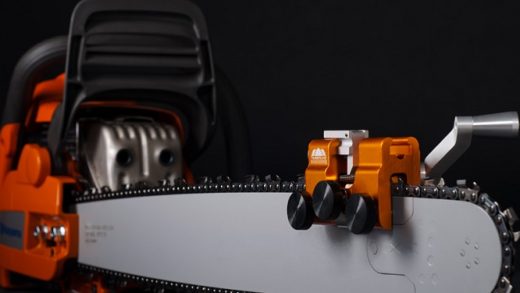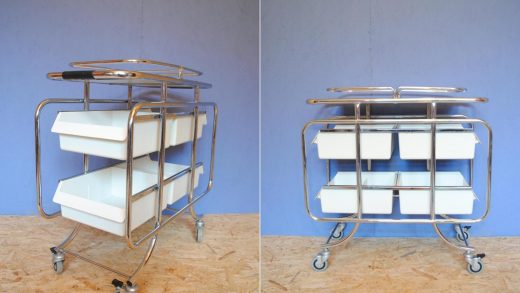Everything You Need to Know about Screw Compressors
Air compressors are indispensable tools found in dozens of different industries and businesses. They provide pressurised air used to run a range of tools as well as large and complex machinery. Obvious examples are compressors that inflate your tyres at the local servo, those that power air tools, like nail guns and sanders in woodworking and auto repair shops, to larger units that supply the power for bigger construction machinery, like industrial jackhammers and concrete impactors. In fact, many things that we take for granted and consume daily, like food, beverages, clothing, fuel, and pharmaceuticals are produced with the help of air compressors.
Contents
Types of Air Compressors

There are two basic types of air compressors, positive displacement and dynamic displacement, based on the way they compress air. Positive displacement compressors can be further divided into rotary screw compressors, rotary vane, scroll compressors, and reciprocating or piston variants. These draw in and capture air in a chamber and then reduce the volume of that chamber, thereby compressing the air. They work with a constant gas flow rate and pressure changes during operation. Compare this to dynamic axial or centrifugal compressors that work by using impellers to rapidly draw air and restrict that air to increase pressure. This is what you’d find in many cars today, in the form of a turbocharger.
What are Screw-Type Compressors?
A rotary screw compressor is a type of positive displacement compressor consisting of two mated rotors or screws meshed together and rotating in opposite directions. The air is drawn inside the housing and compressed as the space along the rotors is reduced. Their efficient operation, allowing for continuous working cycles, is preferred over reciprocating pistons and centrifugal compressors in many applications. There are smaller variants that produce 5-10 HP, but enough to power all air tools in a smaller workout for an entire day, to huge compressors that pump out 500+ HP and power tools at large-scale construction sites, drilling equipment in oil exploration, and high-volume manufacturing facilities.
Types of Rotary Screw Compressors

Rotary screw-type compressors can be oil-free or oil-injected. The main difference between the two types is the presence of oil in the air end. In oil-injected compressors, the oil serves as a seal between the two interlocking rotors and helps to transfer the mechanical energy driving the rotors. It also cools the compressed air when temperatures rise and allows for uninterrupted working cycles. Oil-injected compressors compress air in a single stage, meaning less complex designs (apart from the oil cooling system), lower purchase prices, and maintenance costs than the twin compression stages in oil-free compressors. Oil carryover or traces of oil may be present, although, for typical usage in settings like workshops and manufacturing, the minute quantities serve as a lubricant, protecting against high heat levels, pronounced abrasions, and corrosion.
Oil-free, or dry, compressors have rotors that are controlled by timing gears to ensure that they are properly aligned. The rotors have no direct contact with each other so there is some clearance between them. While there is no oil in the air ends present here, oil-free compressors still need oil to lubricate gears and bearings. In addition, compressing air creates heat and something an oil-injected rotary compressor handles well. But here there’s the need for a pre-cooler, intercooler, and after-cooler for the compressed air to be usable. This ups the cost significantly.
The complete absence of oil in the end product – compressed air – means that these compressors can be used in food and beverage production, medical and pharmaceutical applications and industrial uses where oil-free air is an absolute must.
Parts of a Rotary Screw Compressor
Rotary compressors are complex and consist of many parts. The main component, though, is the air-end. This is the part in which the air is compressed. Air enters the compressor and air-end through an inlet valve and is then mixed with oil and compressed by the moving rotors. The mixture then enters a primary separator tank which is responsible for separating the oil from the air and does this with mechanical and centrifugal force. Air then enters a secondary separation filter, tasked to remove any remnants of oil. The cleansed air is collected in a receiver tank or is ready to be used. Simultaneously, the separated oil is cooled in the oil cooler, cleansed from debris and contaminants in an oil filter and returns to the air end by way of the scavenging return valve. Both oil and air are moved between varying parts with the appropriate hoses, able to withstand high temperatures and pressures. Power is supplied from a three-phase industrial connection, running a fixed or variable-speed motor. Levers and switches control operation.
Benefits of Using a Rotary Screw Compressor

• Uninterrupted Duty Cycles – Rotary screw compressors will deliver the required air pressure for the entire duration it’s needed. There’ll be no downtime, like with reciprocating piston compressors. Instead, a screw compressor can operate continuously and with consistent results.
• Performance – They can operate at high or low temperatures and provide the same airflow, regardless of conditions. This makes rotary compressors a popular choice in demanding settings where the higher power ratings are put to good use.
• Efficiency – Generating less heat and using less oil while compressing air at specified pressure means these compressors are also more efficient than other options, translating to lower running costs.
• Safety – With the ability to provide constant output in a range of conditions, rotary screw compressors are also extremely safe to use.
• Size and Whispery Quiet Operation – For the power they provide, screw compressors aren’t the behemoths they’re supposed to be. They take up smaller footprints and fit neatly within all working environments. And they won’t pierce ear drums when in operation like some other compressor types.
Prices will vary on available power, the airflow rate at a given pressure (in Litres per Minute, or LPM), whether the compressor has variable speeds to improve efficiency, the quality of the componentry, and where it’s built.

















